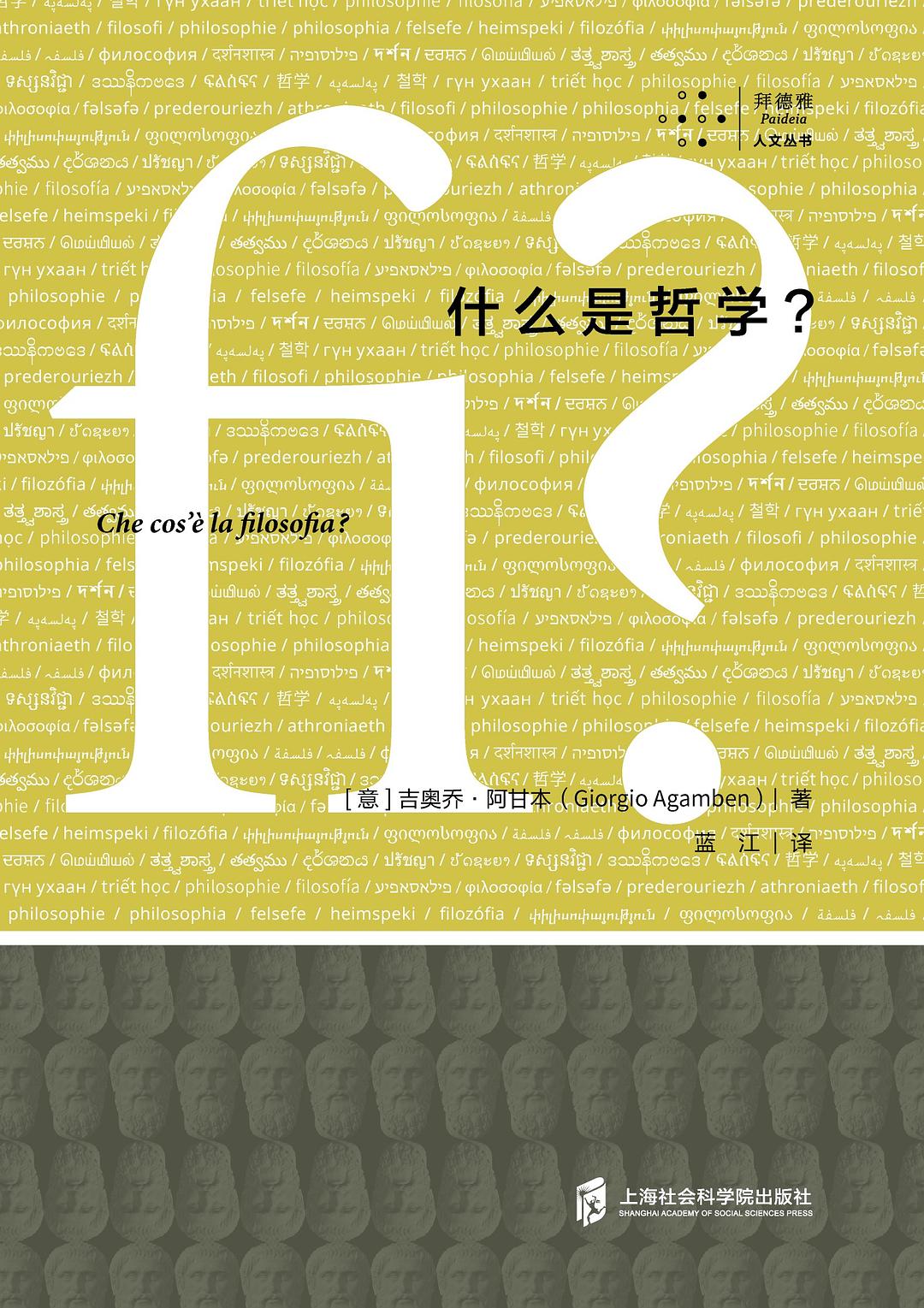WULOLIFE
《什么是哲学?》作者: [意]吉奥乔·阿甘本 出版社: 上海社会科学院出版社 译者: 蓝江
《什么是哲学?》作者: [意]吉奥乔·阿甘本 出版社: 上海社会科学院出版社 译者: 蓝江
Couldn't load pickup availability
Description
内容简介 · · · · · ·
-编辑推荐-
★阿甘本50年学术生涯的总结之作
★在海德格尔、德勒兹之后,阿甘本重新拾起“什么是哲学”这一问题,并给出了截然不同的阐释。
。
★哲学只能在它被创造的时刻出现,同时,也在这一个时刻消亡。对于只存在于一旦我们停止了我们的创造活动,它就会随之消亡。
★最终,不仅仅是一个哲学的问题。
-内容简介-
他一直有一本未完成的著作,甚至他到那时为止的所有著作,都只能算是他这本未完成著作的序言。而在某种意义上,《什么是哲学? 》就是阿甘本口中的那本著作。本书由以下五篇文章组成:
(1)《语音实验》。本文在某种程度上可以被视为对德里达《论文字学》的一种回应。在阿甘本看来,我们不能将字母等同于与它对应的发音体系;相反,我们可以找到一种原初的语音,一种不能被还原为文字的语音。
(2)《论需要的概念》。不同于伦理学对“需要”的阐释,本文将“需要”视作一个本体论范畴,而非道德范畴。在此基础上,本文对必要性、可能性、现实等范畴提出了新的理解。
(3)《论可说之物与观念》。本文从柏拉图的《书简七》出发,借用斯多葛学派的“可说之物”,重新阐释了柏拉图的“观念”。正如阿甘本所说:“哲学不再通过观念在语言中追问自身。
(4)《论写序》。本文同样受到了《书简七》的启发,阿甘本向我们展示了哲学的序言性、间接性、非教条特征。毫无疑具有的特征。
(5)《至上的音乐。音乐与政治》。乍看起来,这篇讨论音乐的附录在本书中显得有些另类。其实不然。通过阿甘本对音乐史的独特解读,我们得到了一种全新的音乐概念。而在某种意义上,我们恰恰可以将这视为本书标题所提问题的答案。
作者简介 · · · · · ·
- 作者简介 -
吉奥乔•阿甘本(Giorgio Agamben,1942— ),意大利哲学家,当代最富影响力的思想家之一,代表作为“神圣人”系列。拜德雅已出阿甘本著作:《语言的圣礼:誓言考古学》(“神圣人”Ⅱ,3)、《宁芙》、《奇遇》、《普尔奇内拉或献给孩童的嬉游曲》、《品味》、《什么是哲学?》。
- 译者简介 -
蓝江, 1977年出生,博士生导师,南京大学马克思主义社会理论研究中心研究员,主要研究方向为国外马克思主义、当代欧陆激进左翼思想,著有《忠于事件本身:巴迪欧哲学思想导论》、《阿甘本五讲》等书,译有《语言的圣礼:誓言考古学》(“神圣人”II,3)、《宁芙》、《品味》、《什么是哲学?》、《巴迪欧:关键概念》等书。
